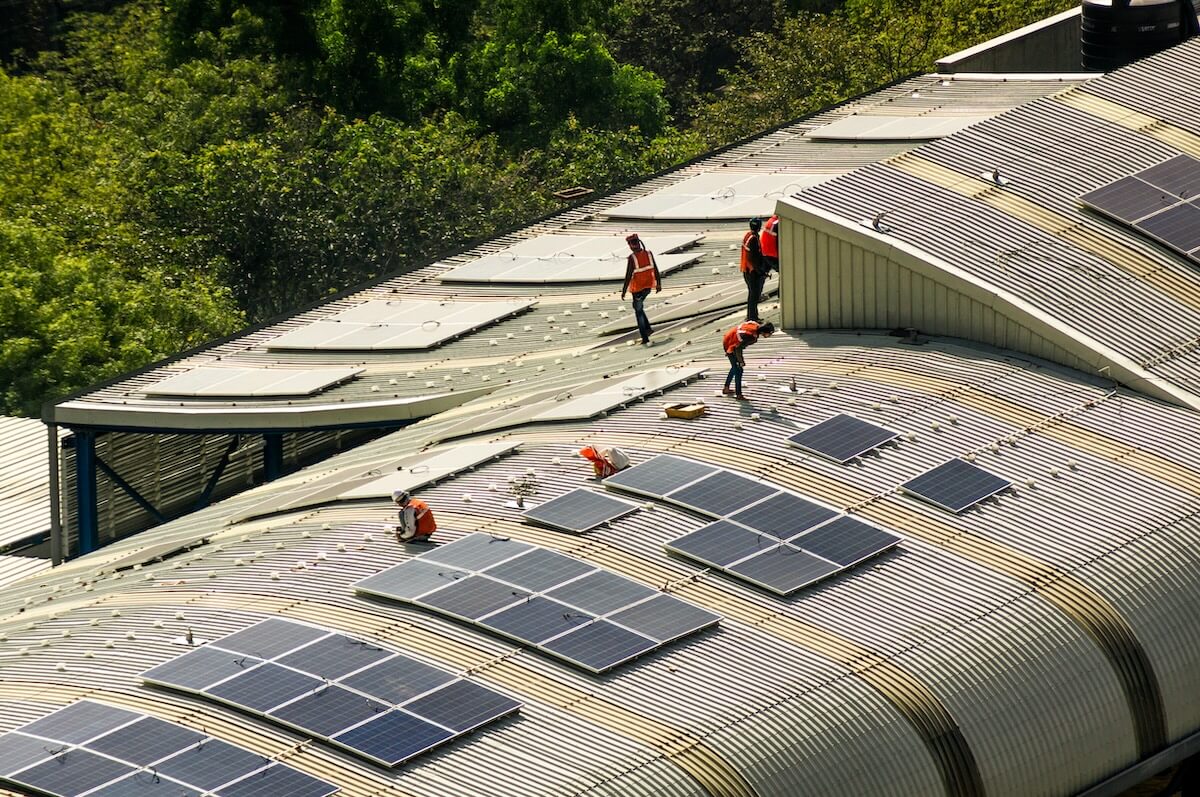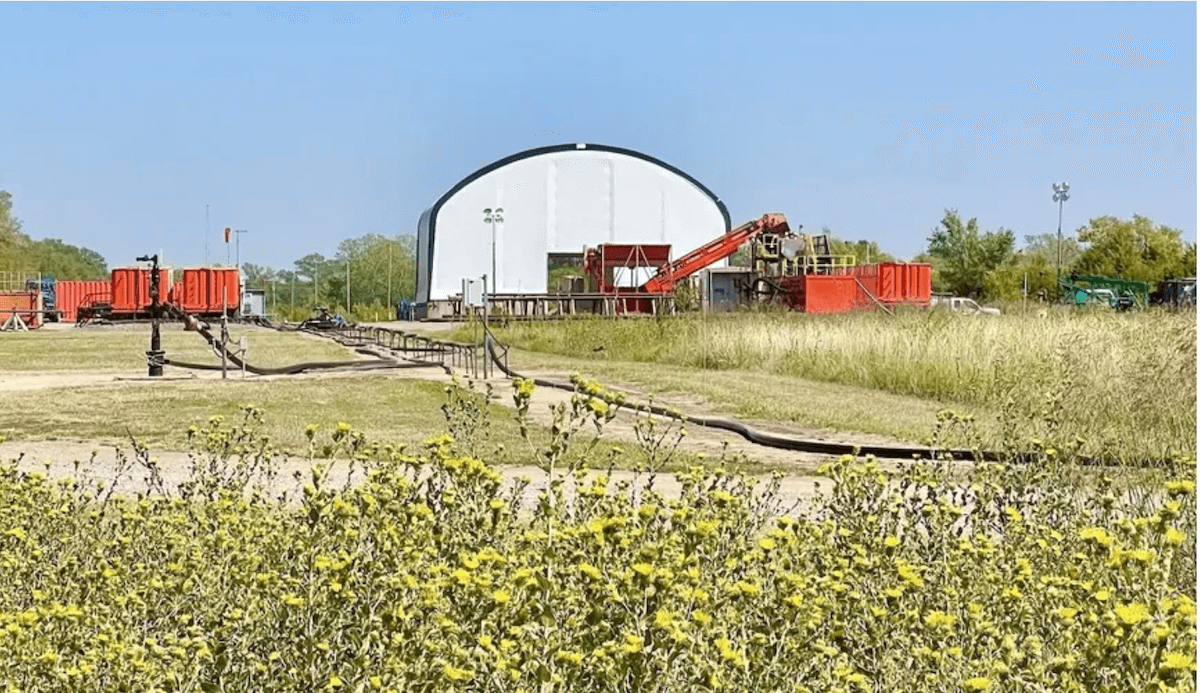ImpactAlpha, September 19 – Clean-tech research firm Clean Edge has been tracking the investment, policy, and technology trends of the modern energy transition for more than 20 years. We estimate that the world is approximately halfway through this transition (2000 – 2050) to a 100% clean-energy economy. Based on our collective experience, we have created a Seven-Point Energy Transition Action Plan that, if followed, would accelerate the viability and success of the clean-energy transition.
If companies, governments, and individuals are going to meet their net-zero and carbon-reduction targets by mid-century, then how and where we focus our collective actions will matter. Targeted technology, policy, and capital innovations must be deployed at scale to meet the challenges of this monumental shift.
Since we first published our Action Plan in July, we’ve witnessed a long-overdue milestone. The Inflation Reduction Act (IRA) represents the enactment of the first true U.S. industrial policy that’s rooted firmly in the clean energy transition. The even larger Infrastructure Investment and Jobs Act enacted in 2021 is also a key component of energy transition industrial policy, particularly for grid modernization. In the IRA, the $369 billion committed to clean energy growth and greenhouse gas reduction tracks closely with the actions outlined in our Action Plan.
What does industrial policy look like? In just a few weeks since the IRA passed, a slew of U.S. and foreign companies – among them Toyota (in joint venture with Panasonic), Honda, LG, First Solar, and Piedmont Lithium – have announced plans to open new operating sites in the U.S. or significantly expand existing ones. We think these are the first of many more to come. While China uses a top-down, command-and-control industrial approach, we’re confident that the U.S. approach, this time mostly with “carrots” to unleash market forces and leverage private capital, will meet the goals of advancing early stage innovation and demonstration, tech commercialization, and market deployment across the key energy transition sectors.
Our 7-Point Plan (mapped against the related policies in the IRA) follows:
1) Focus on efficiency first
Pursue energy efficiency’s low-hanging fruit for the most bang-for-the-buck, including LED lighting, insulation materials, building controls, and energy management systems.
For U.S. consumers, the IRA includes many “carrots” to spur action on efficiency, with incentives to buy and invest in a range of energy-efficient appliances and measures. The bill includes $9 billion for consumer home energy rebate programs and 10 years of consumer tax credits for energy-efficient heat pumps, electric HVAC and water heaters, and rooftop solar. For example, the feds will pay eligible homeowners between $2,000 and $8,000 for household upgrades that significantly lower their energy use, such as new insulation or air sealing. For commercial and large multi-family buildings, the current tax deduction for energy-efficient measures (in both new construction and retrofits) will increase from $1.88 per square foot to $5.00.
2) Scale up wind and solar massively
Support aggressive global deployment of wind and solar power, both utility-scale and distributed, to reach 100% zero-carbon emission electric grids.
Incentives for this transition imperative are arguably the heart of the IRA, which extends and widens the availability of all-important federal tax credits for funders and developers of wind and solar deployment. The bill changes the federal tax code by extending the current production tax credit (PTC), the critical incentive for the wind industry, and the investment tax credit (ITC), which drives commercial solar power deployment, for the next 10 years. This will end the frustrating cycle of 11th-hour renewals of about-to-expire tax credits (or failure to renew them at all) that made deployment growth and investment at times volatile and unpredictable.
The bill offers additional incentives for the use of U.S.-manufactured content, and for projects located in low-income communities and on tribal lands. And for the first time, it creates a “direct pay” option for entities that don’t pay taxes and thus couldn’t use tax credits, such as rural electric cooperatives, nonprofits, and state and local governments.
3) Pair renewables with storage at scale
Deploy storage at scale to enable 100%, 24/7 renewable power. Focus on both utility-scale and distributed storage, using electrochemical batteries (lithium-ion, solid-state, flow, etc.) and mechanical energy storage (pumped hydro, compressed air, etc.)
Battery storage costs have fallen approximately 89% over the past decade, making both utility-scale and distributed storage increasingly cost-effective (akin to the solar industry about five to 10 years ago). In recent years, the storage industry has lobbied extensively for a federal ITC for storage, to make storing electricity cost-effective for mass adoption. The IRA finally brings the ITC to storage. Both paired and standalone storage projects are now eligible for the same 30% ITC for solar power explained in Point 2 above.
4) Electrify heating and vehicles ASAP
Although we often hear the demand to “electrify everything,” we recommend focusing on two high-impact areas: passenger vehicles (two-, three-, and four-wheelers) and heating and cooling systems for homes and buildings (by adoption of electric heat pumps).
The IRA includes the biggest incentives ever put in place for buyers of both new and used electric vehicles (EVs), and the first ever specifically aimed at low and middle-income consumers. The credits range up to $7,500 for a new EV and $4,000 for a used one; eligible buyers must be earning less than $150,000 a year (or $300,000 for couples), and high-end luxury models are excluded. The bill also includes incentives for the domestic production of EV batteries, aiding the transition for more sustainable sourced materials (see Point 7 below).
For homeowners, as noted earlier, the IRA should turbocharge the growth of electric heat pumps and other home electrification tools with a carrot even more attractive than tax credits: rebates. These include up to $8,000 for heat pumps for heating and cooling, $1,750 for heat pump water heaters, and up to $840 for an electric stove, cooktop, range or oven.
5) Modernize transmission and distribution grids
Build out a range of electricity grid modernization efforts including digitization, smart meters and devices, bi-directional meters and charging, smart substations and high-voltage, direct-current transmission lines. A modern 21st century grid is critical to enable the clean-energy transition.
In the IRA, grid modernization equipment and components are one of several sectors covered in the $10 billion program of tax credits for manufacturing advanced energy products (a 30% tax credit for capital costs for building or upgrading factories.) It also authorizes $2 billion in loans to fund new or upgraded transmission lines in specified areas, and an additional $100 million is earmarked for transmission of offshore wind. These funds build on the $65 billion authorized in last year’s Infrastructure Investment and Jobs Act to enhance, modernize and increase the reliability and resiliency of the grid.
6) Develop green hydrogen, ammonia and fuels
Decarbonizing heavy industry will not be easy and will require green fuels above and beyond electrification. We recommend the adoption of green hydrogen and fuels to support the production of steel, fertilizer and other energy-intensive industries, as well as for long-haul transport such as trucking, marine shipping and air travel.
To date, the biggest hurdle for green hydrogen — electrolyzing H2O with wind or solar-generated electricity — has been cost. The IRA establishes a production tax credit for green hydrogen for the first time, and it’s a generous one of $3 per kilogram. Many industry experts say that’s a game-changer, making green hydrogen price-competitive with so-called gray hydrogen derived from natural gas in a highly GHG-emitting process.
7) Secure sustainably mined and recycled materials
Ensure the availability of mined and recycled materials for EV, solar, wind, and other clean-energy technology production. The future of energy depends on secure and reliable supplies of sustainably mined or recycled materials (lithium, rare earths, silicon, nickel, etc.) rather than the extraction of fossil fuels such as coal, oil and gas.
The IRA targets the issue of sustainably mined and recycled materials head-on. For EVs to qualify for the tax credits discussed in Point 4 above, the bill requires that specified percentages of critical battery materials in those EVs must be extracted or processed in the U.S. or in a U.S. free-trade partner country, or be recycled in North America. The requirements scale up from 40% of battery materials in EVs sold before 2024 to 80% in EVs sold after 2026. Few EVs made in the U.S. today come close to meeting these mandates; China currently processes close to 90% of the rare earth elements used in EV batteries. How industry and government work together to meet such stringent goals for EV and storage systems is something we plan on tracking closely.
Just a few weeks ago, it looked like the majority of clean-energy advancements in the U.S. would be coming out of clean energy-focused state legislatures, corporate boardrooms and via individual action. But the IRA, with billions in tax credits, rebates and other incentives, changes everything — speeding up the seven key paths we see enabling the clean energy transition. The bill establishes the U.S. as a global leader of the energy transition, putting the necessary dollars behind clean energy and emissions reduction goals. The energy transition is global, but it can’t move forward nearly fast enough without the U.S. leading the way.
Ron Pernick is managing director and Clint Wilder is editorial director at Clean Edge, Inc., a clean-tech research firm and developer and publisher of thematic stock indexes tracking clean energy, transportation, water and the grid. As experts who have tracked the clean energy economy for more than two decades, they have co-authored two books: The Clean Tech Revolution and Clean Tech Nation.











